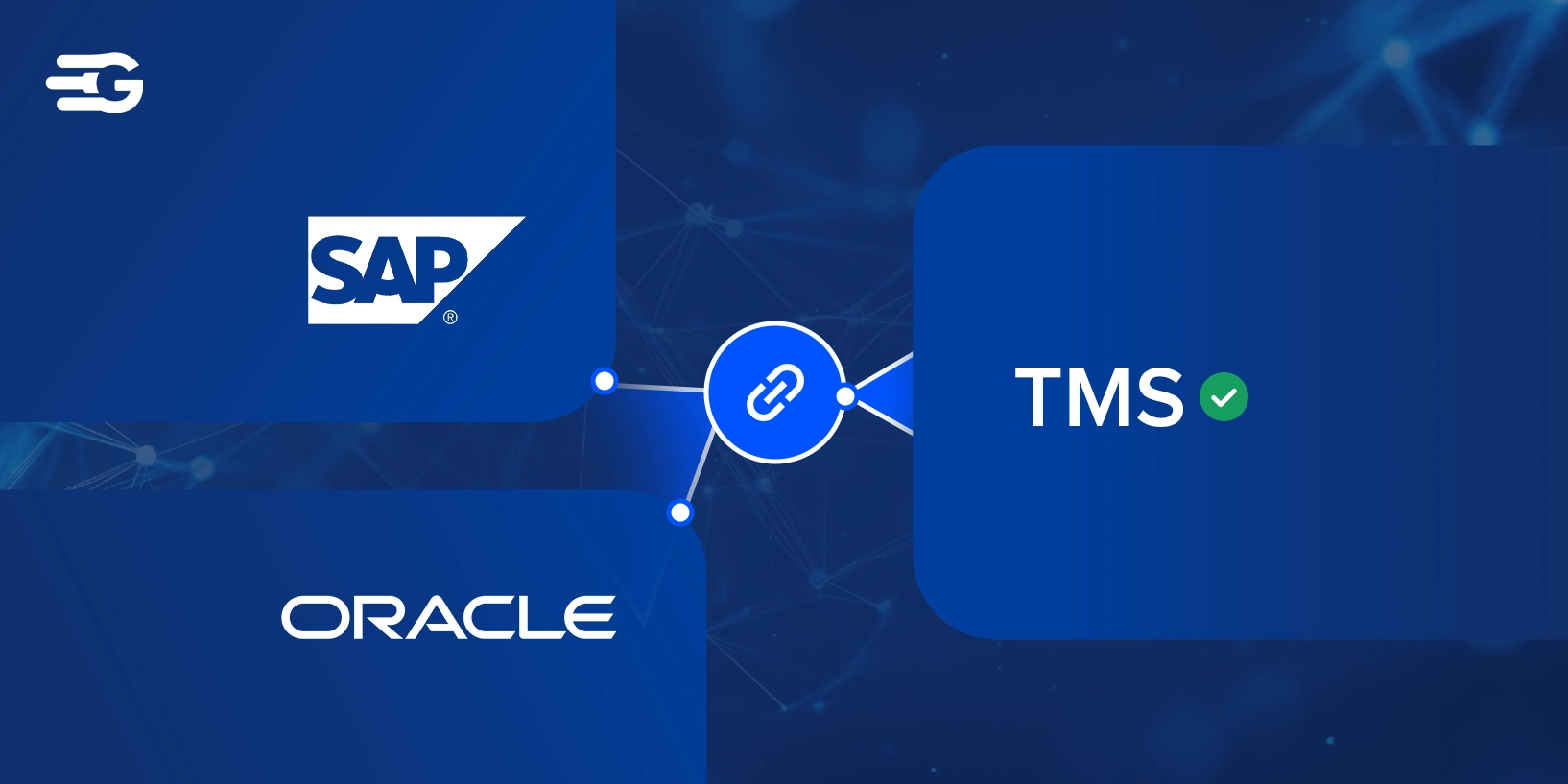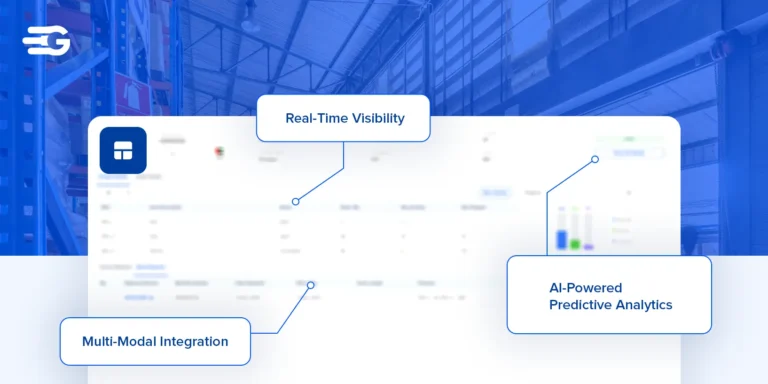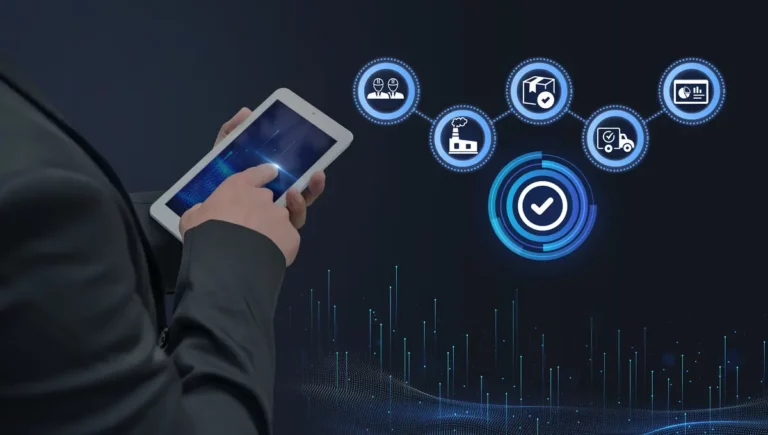TMS Integration with SAP and Oracle ERP: How to Find the Right System
In today’s dynamic supply chain environment, integrating a Transportation Management System (TMS) with enterprise resource planning (ERP) systems like SAP and Oracle has become essential. Seamless integration enhances visibility, streamlines operations, and improves cost efficiency. However, many organizations face challenges such as compatibility issues, data silos, and complex workflows that hinder smooth integration. This blog will guide decision-makers in selecting a TMS that aligns effortlessly with SAP and Oracle systems, ensuring seamless functionality and maximum efficiency.
Why Seamless TMS Integration with SAP and Oracle ERP Matters
In an increasingly interconnected world, businesses need real-time visibility and streamlined operations to stay competitive. TMS integration with SAP and Oracle ERP ensures smooth data exchange, eliminating inefficiencies and enhancing supply chain performance.
Eliminating Data Silos: Integrated systems ensure consistent data flow across procurement, logistics, and finance, reducing errors and manual interventions.
Enhanced Supply Chain Visibility: Real-time updates from the TMS feed directly into SAP/Oracle dashboards, offering end-to-end supply chain insights.
Automated Processes and Cost Savings: Integration reduces manual data entry, automates invoicing and freight auditing, and optimizes carrier management.
Improved Decision-Making: Unified data sources provide more accurate analytics and reporting, enabling proactive supply chain management.
Key Features for Seamless TMS Integration with SAP and Oracle ERP
Pre-Built Connectors and APIs: Ensure the TMS offers robust APIs and pre-configured connectors specifically designed for SAP and Oracle ERP systems, reducing integration time and complexity.
Real-Time Data Synchronization: Look for TMS platforms that support real-time data sharing, ensuring shipment updates, freight costs, and inventory levels are instantly reflected in your ERP.
Flexible and Scalable Architecture: The TMS should adapt to evolving business needs and handle complex workflows without requiring extensive custom coding.
End-to-End Process Automation: From order processing to invoicing and freight payment, the TMS should automate key logistics processes within your ERP environment.
Compliance and Security Standards: Ensure the TMS meets global data compliance standards (GDPR, ISO) and offers secure data handling, especially critical for financial and logistical data shared with SAP/Oracle.
Step-by-Step Guide to Selecting the Right TMS for SAP and Oracle Integration
Selecting the right TMS requires careful consideration of your ERP environment, business needs, and long-term goals. By following this structured approach, businesses can navigate the selection process efficiently, ensuring seamless integration and maximum return on investment.
Step 1: Assess Your ERP Environment and Integration Needs
Understand Your Current Setup: Begin by identifying which SAP or Oracle modules (e.g., SAP S/4HANA, Oracle Cloud SCM) are currently in use and how they interact with your logistics workflows. This assessment will help in determining integration points and potential challenges.
Pinpoint Integration Goals: Define key objectives such as automating freight auditing, enhancing shipment visibility, or optimizing carrier selection. Understanding your business priorities will help in identifying the right TMS features to look for.
Step 2: Shortlist TMS Solutions with Proven SAP/Oracle Integration Capabilities
Look for Vendor Certifications: Some TMS providers hold official SAP or Oracle certifications, which can indicate smoother compatibility, pre-built integrations, and dedicated support for ERP environments.
Evaluate Integration Case Studies: Reviewing case studies of businesses with similar ERP environments can provide insights into how well a particular TMS has integrated with SAP or Oracle. This research can highlight strengths, potential challenges, and expected benefits.
Step 3: Conduct a Technical Evaluation with IT Teams
Involve Your ERP and IT Experts: Work closely with your IT team to assess the TMS’s API structure, data mapping capabilities, and customization requirements. A strong technical evaluation ensures that the integration will be efficient and scalable.
Request a Proof of Concept (POC): Before full implementation, test the TMS in a sandbox environment integrated with your SAP or Oracle system. This allows for early identification of potential integration challenges and ensures a smoother deployment.
Step 4: Consider Total Cost of Ownership (TCO)
Factor in Integration Costs: Beyond the licensing fees, account for integration services, data migration, system customization, and ongoing support costs. These factors contribute significantly to the total cost of ownership.
Evaluate Long-Term ROI: Assess the potential savings gained through automated workflows, reduction of manual errors, improved visibility, and enhanced decision-making. A well-integrated TMS should deliver measurable long-term value beyond its initial investment.
GoComet: The Ideal TMS for SAP and Oracle Integration
Seamless ERP Integration
GoComet is designed to integrate effortlessly with SAP and Oracle ERP systems, offering pre-built APIs that enable smooth data exchange between logistics and enterprise operations. With its plug-and-play capabilities, businesses can significantly reduce integration time and complexity, allowing for quicker deployment and improved efficiency.
Real-Time Visibility and Predictive Insights
The platform provides real-time shipment tracking, predictive ETAs, and automated delay management, ensuring complete supply chain visibility. By seamlessly feeding live shipment data into SAP and Oracle dashboards, businesses can make proactive decisions that minimize disruptions and optimize logistics performance.
Automated Freight Cost Optimization
Leveraging AI-driven freight benchmarking tools, GoComet integrates directly with ERP financial modules, enabling businesses to track and optimize freight costs with precision. This automated process not only reduces manual data entry but also ensures accurate invoicing and cost control, leading to significant savings.
Scalability and Flexibility
GoComet’s architecture is built for scalability, adapting to the evolving needs of businesses of all sizes. Whether handling complex multi-leg shipments or expanding into new markets, GoComet ensures seamless functionality within SAP and Oracle ecosystems without requiring extensive custom development.
Compliance and Security
GoComet adheres to global data security and compliance standards, ensuring that financial and logistical data shared with SAP and Oracle is protected. With robust encryption and GDPR-compliant data handling, businesses can trust GoComet for secure and reliable integration.
Best Practices for a Smooth TMS-ERP Integration
Develop a Detailed Integration Plan: Setting clear milestones is essential for a smooth integration process, as it helps outline timelines for different phases, including testing and full deployment. Additionally, aligning cross-department teams such as logistics, IT, and finance ensures that all stakeholders are on the same page regarding integration goals and processes, facilitating seamless collaboration and execution.
Prioritize Data Mapping and Quality Control: For seamless data exchange between the TMS and ERP, businesses must standardize data formats, maintaining consistent data fields to prevent synchronization errors. Additionally, implementing robust data validation protocols is essential, with regular audits conducted to safeguard the accuracy and integrity of information flowing between systems.
Invest in Training and Change Management: To ensure successful adoption of the integrated TMS-ERP system, businesses must empower users with comprehensive training, enabling them to fully leverage the system’s capabilities. Post-implementation, it is crucial to monitor performance through key performance indicators (KPIs) to measure efficiency gains, cost savings, and overall integration success.
Seamlessly integrating a TMS with SAP and Oracle ERP systems is a game-changer for businesses aiming to enhance visibility, optimize costs, and improve overall supply chain efficiency. By selecting a TMS like GoComet, organizations can leverage pre-built APIs, real-time visibility, automated cost optimization, and robust security to ensure a smooth and effective integration process.
With a strategic approach—assessing ERP needs, shortlisting proven solutions, conducting technical evaluations, and considering total cost of ownership—businesses can maximize ROI and streamline logistics operations. Implementing best practices, such as structured integration planning, data validation, and user training, further ensures long-term success.
Ready to transform your logistics operations? Schedule a demo with GoComet today and discover how effortless SAP and Oracle ERP integration can be.






